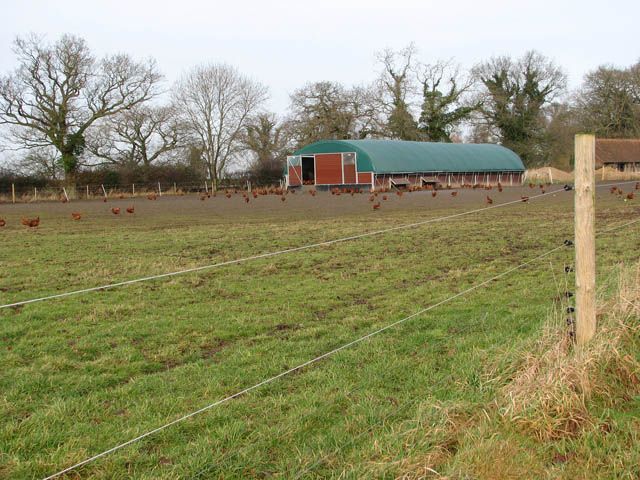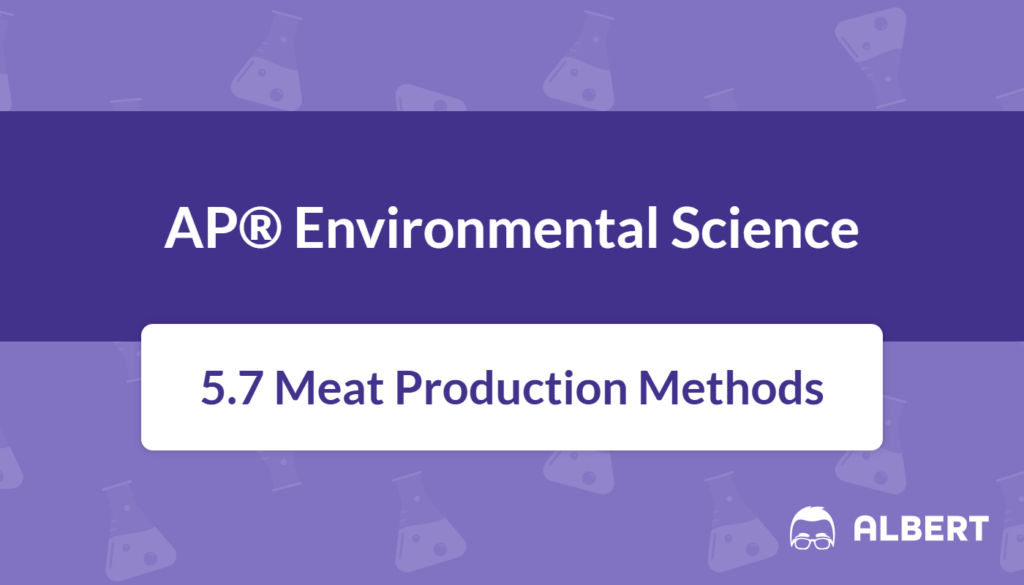What We Review
Introduction
Meat production plays a significant role in feeding the global population and shaping the environment. In AP® Environmental Science, exploring different meat production methods is essential for understanding how human activities affect ecological systems. Furthermore, analyzing the efficiency and sustainability of these methods can guide responsible resource management. This article overviews two common meat production approaches—Concentrated Animal Feeding Operations (CAFOs) and free-range grazing—and examines their benefits and drawbacks. It also highlights how overgrazing and overall meat consumption levels influence the environment.
What Are Meat Production Methods?
Meat production methods refer to the strategies and systems by which animals are raised for food. These methods vary widely in terms of scale, feeding practices, and overall environmental impact. Most modern operations fall into two main categories:
- Concentrated Animal Feeding Operations (CAFOs), also known as feedlots.
- Free-range grazing, which allows animals to roam and feed on grass.
Understanding these systems is crucial because it reveals how farms manage resources such as land, water, and feed. Moreover, it underscores why different production methods can lead to differing environmental outcomes.
Concentrated Animal Feeding Operations (CAFOs)
Description and Operation
CAFOs are large-scale facilities where animals—often cattle, pigs, or poultry—are kept in tight quarters. These operations rely on highly regulated feeding programs, typically involving grains or specialized feed mixtures. The primary goal is to maximize growth and prepare animals for slaughter as efficiently as possible.
CAFOs are designed to hold a substantial number of animals in a relatively small area. Therefore, they allow producers to maintain tight control over feed intake, veterinary care, and general conditions. Nevertheless, the high-density environment creates concerns regarding waste management and animal welfare.
Benefits of CAFOs
Despite potential concerns, CAFOs offer several benefits:
- Lower consumer costs: By raising a large number of animals quickly, feedlots can reduce production expenses. Consequently, meat prices can stay relatively low, making these products widely accessible.
- Efficient growth: Grains and high-energy feeds are formulated to promote rapid weight gain in animals. As a result, productivity increases.
- Reduced land area per animal: Because CAFOs confine animals in a smaller space, total land usage might be lower than extensive grazing systems for the same volume of meat production.
Drawbacks Associated With CAFOs
However, CAFOs also come with challenges:
- Environmental impacts: Feedlots generate large quantities of organic waste, including manure that can contaminate both ground and surface water if not managed properly.
- Animal welfare concerns: Crowded conditions may introduce diseases and stress among livestock. Consequently, producers often use antibiotics and other preventive measures, affecting the final product.
- Dependency on grains: Because CAFO animals are fed grains rather than grass, feed production may involve more intensive agriculture. This can lead to greater fertilizer and pesticide use, contributing to water and soil pollution.
Example: How a Typical CAFO Operates
- Arrival of livestock: Animals arrive at the feedlot and are placed into designated pens.
- Daily feeding: High-energy feed mixtures, often composed of corn or soy, are provided at regular intervals.
- Veterinary oversight: Veterinarians monitor animal health, administering antibiotics or growth hormones if allowed by local regulations.
- Waste collection: Manure accumulates rapidly and must be stored in lagoons or treated to prevent runoff.
- Slaughter preparation: Once animals reach the desired weight, they are shipped to processing facilities for slaughter.
This system emphasizes speed and volume, but it also demands careful waste management. Transitioning to alternative methods may involve higher costs or more land, making feedlots an ongoing subject of debate in environmental science.
Free-Range Grazing
Overview of Free-Range Grazing Practices
Free-range grazing involves allowing animals to roam in open pastures and feed on grass throughout their lives. Producers who adopt this method prioritize a more natural setting for livestock. Consequently, animals have greater freedom of movement, healthier social dynamics, and diets closer to what their species would naturally consume.

Unlike CAFOs, free-range systems may require rotating animals among multiple pastures. Rotational grazing helps maintain soil fertility and ensures animals do not overuse a single location. Therefore, these strategies often rely on sufficient land availability and a thorough understanding of grassland management.
Benefits of Free-Range Methods
Free-range grazing offers several noteworthy advantages:
- Healthier animals: Grazing livestock tend to have lower stress levels and are often free from routine antibiotic use.
- Nutrient cycling: Animal waste distributes evenly across the pasture, promoting soil health and serving as valuable fertilizer.
- Reduced feed costs: Grass-based diets can decrease reliance on grains and the associated industrial agriculture inputs.
Drawbacks of Free-Range Grazing
Still, free-range methods are not without challenges:
- Land usage: Because animals require open space, free-range farms need much larger tracts of land to support grazing.
- Higher costs: The more time animals spend grazing, the longer it typically takes to reach market weight. Consequently, meat from free-range animals often costs more.
- Vulnerability to weather patterns: Droughts and other weather events can disrupt natural feed availability, complicating farm operations.
Example: Life Cycle of a Free-Range Animal
- Birth: Calves, lambs, or other young animals remain with their mothers and begin nursing.
- Grazing phase: As they mature, animals feed primarily on grass in open pastures.
- Rotation and maintenance: Farmers rotate pastures to prevent overuse, and animals benefit from varied feeding.
- Growth monitoring: Producers track weight gain, ensuring animals stay healthy.
- Market preparation: Animals are sold or processed at a time that aligns with both animal welfare standards and economic viability.
This example highlights how free-range grazing takes a more extensive approach, relying on land and natural feeding cycles. However, rising consumer demand for ethically produced meat has led many operations to adopt some version of free-range or pasture-based systems.
Comparison of CAFOs and Free-Range Grazing
When comparing these methods, it is helpful to consider multiple angles:
- Environmental footprint: Free-range grazing generally promotes healthier ecosystems through natural nutrient cycles. However, it may require more land, especially given that it is around 20 times more land-intensive to produce the same calories from meat as from plants. CAFOs, in contrast, consolidate operations, but they can produce considerable waste and nutrient runoff.
- Animal welfare: CAFOs can lead to stress and disease due to crowding. Meanwhile, free-range animals typically have more space to exhibit natural behaviors.
- Cost and efficiency: CAFOs often offer lower consumer prices because animals reach slaughter weight faster. Conversely, free-range models take longer and may result in higher retail prices.
Thus, there is no single “best” method if only one factor is considered. Instead, the choice depends on balancing environmental protection, animal welfare, and affordability.
Overgrazing and Its Consequences
Overgrazing arises when too many animals feed continuously on the same tract of land. Because the animals repeatedly strip vegetation, their grazing outpaces the rate at which plants can regenerate. This imbalance leads to several negative outcomes:
- Soil erosion: With fewer plant roots to hold it together, the soil becomes more vulnerable to wind and runoff.
- Reduced biodiversity: As certain grasses decline, the diversity of plant and animal life in the area can also decrease.
- Desertification: Prolonged overgrazing in low-precipitation areas can gradually transform those landscapes into deserts.
Example: Overgrazing Effects on a Landscape Over Time
- Initial pasture use: A moderate number of animals consume grassland at a sustainable rate. Vegetation regenerates during rest periods.
- Increased stock density: More animals are introduced without adjusting the rotation schedule, which prevents the grass from recovering.
- Vegetation loss: Plants struggle to regrow. Weeds or invasive species may fill gaps, but overall vegetation declines.
- Soil exposure: Bare ground becomes prone to erosion, especially during storms or droughts.
- Long-term damage: Without intervention, the area can degrade into an arid or semi-arid region with reduced agricultural potential.
Therefore, managing grazing pressure is crucial to avoid the detrimental effects of overgrazing and to maintain the long-term productivity of pasture lands.
The Impact of Meat Production on the Environment
Meat production, whether practiced intensively or through free-range methods, generally has a larger ecological footprint than plant agriculture. In fact, producing the same calorie content from meat frequently requires substantially more land, water, and energy inputs. Furthermore, livestock emits greenhouse gases such as carbon dioxide (CO2), methane (CH4), and nitrous oxide (N2O).
Reducing meat consumption can ease these environmental pressures. For instance, shifting a portion of one’s diet toward plant-based foods can decrease water usage and lower greenhouse gas emissions. Additionally, fewer animals on the land often leads to reduced need for antibiotics and growth hormones. Therefore, even small changes in dietary habits can collectively improve topsoil health, conserve water, and reduce pollution.
Conclusion
In summary, meat production methods exist along a spectrum, from highly intensive CAFOs to more extensive free-range grazing systems. Each method carries benefits and drawbacks, particularly when viewed through lenses of efficiency, environmental stewardship, and animal welfare. CAFOs excel in measurable outputs while free-range models often reflect consumer values for natural animal habitats. Nevertheless, overgrazing remains a critical concern, threatening soil health and increasing desertification if not properly managed.
Balancing meat demand with these biological and environmental considerations helps ensure that ecosystems remain as resilient as possible. Ultimately, being informed about production methods invites more responsible choices. As AP® Environmental Science emphasizes, every decision about food production resonates through soils, water resources, and atmospheric conditions. Understanding these methods can guide both current and future actions for maintaining a sustainable planet.
Important Vocabulary
- Concentrated Animal Feeding Operations (CAFOs): Large feedlot facilities that raise significant numbers of livestock in confined spaces with a focus on rapid growth and cost efficiency.
- Free-Range Grazing: A method allowing animals to roam and feed on grass, requiring larger areas of land and often yielding higher-cost meat.
- Overgrazing: The depletion of vegetation caused by excessive livestock numbers feeding on the same land for too long.
- Desertification: The gradual conversion of low-precipitation regions into deserts as a result of land degradation, often worsened by overgrazing.
- Organic Waste: Material such as manure generated by animals, which can fertilize soil but may contaminate water if not properly managed.
Sharpen Your Skills for AP® Environmental Science
Are you preparing for the AP® Environmental Science test? We’ve got you covered! Try our review articles designed to help you confidently tackle real-world AP® Environmental Science problems. You’ll find everything you need to succeed, from quick tips to detailed strategies. Start exploring now!
Need help preparing for your AP® Environmental Science exam?
Albert has hundreds of AP® Environmental Science practice questions, free response, and full-length practice tests to try out.








